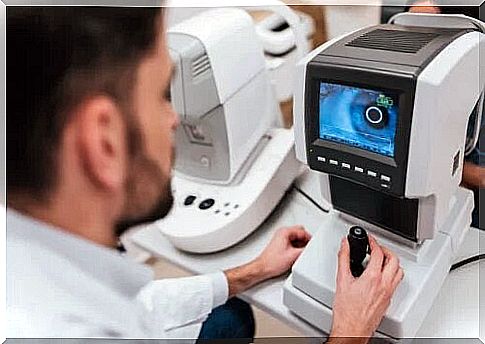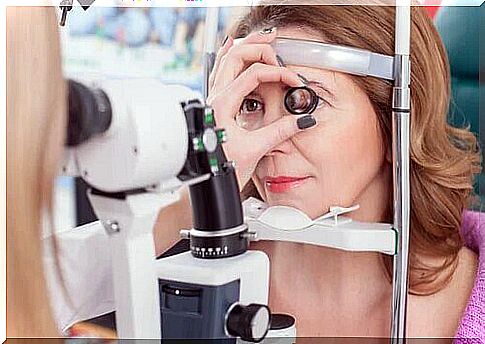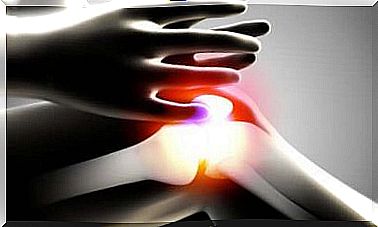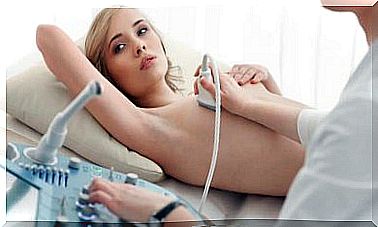Retinitis Pigmentosa, What Does It Consist Of?
Retinitis pigmentosa is a group of diseases of genetic origin that manifest in different ways in those affected. They cause progressive vision loss, very slow in some cases and accelerated in others.

Retinitis pigmentosa is not actually a single disease, but a group of inherited, degenerative and progressive diseases. It is estimated to affect one in 4000 people worldwide, although this number varies depending on the region where it occurs.
It is considered a rare disease since so far only the mutations causing half of the cases have been identified. This despite the fact that retinitis pigmentosa was first described in 1885 by Donders, i.e. over a century ago.
Retinitis pigmentosa is a complex disease that science does not yet fully understand. Currently, it is believed that its development is influenced not only by genetics, but by various environmental factors, but there is still no conclusive research.
What is retinitis pigmentosa

Retinitis pigmentosa is a group of genetic disorders that affect the retina’s ability to respond to light. It usually affects both eyes and leads to gradual loss of vision. In some cases, it can even lead to total blindness.
The retina is the layer that lines the inner part of the eye. Its function is to receive and process images to send them to the brain via the optic nerve. In retinitis pigmentosa, certain cells in the retina are destroyed. There is also usually a buildup of pigment in the back of the eye.
The most common situation is that this type of disease appears between the ages of 25 and 40. However, cases of manifestation before the age of 20 have also been reported, although very rarely before adolescence. It can also occur after 50 years.
The causes
The cause of this disease is essentially genetic, that is to say hereditary. The problem almost always stems from the existence of one or two faulty genes. In other cases, a genetic mutation occurs in people without a family history of the disease.
There are basically four types of retinitis pigmentosa:
- Autosomal Dominant Model (ADRP) : When the disease is present in one of the parents and one of the children. This corresponds to between 6 and 15% of cases.
- Autosomal recessive model (ARRP) : when the father does not have the disease, but passes it on and one of the children has it. The deterioration begins with old age. This corresponds between 22 and 26% of cases.
- From the X-linked scheme (XLRP) : the mother does not have the disease but passes it on to one of her male children. This corresponds between 1 and 10% of cases.
- Simple diagram : these are cases in which there is no family history of the disease or modes of transmission from the parents. This corresponds to 50% of cases.
Currently, it is suspected that environmental factors are involved in the emergence of this disease. It has been suggested that ingestion of lutein, antioxidant vitamins, and omega 3s slows the progression of this disease. Likewise, the consumption of tobacco, alcohol, exposure to the sun and stress seem to accelerate it.
Other facts about the disease

The first manifestation of the disease is usually difficulty seeing in low light conditions and at night. Likewise, the ability to perceive the peripheral visual field is gradually lost, resulting in tunnel vision. In other words, you only see what’s in front.
Deterioration usually occurs slowly but gradually. Sometimes it takes many years between the onset of symptoms and the diagnosis of retinitis pigmentosa. It is important to note, however, that the disease does not affect all people the same way, even if they are from the same family.
At the moment, there is no cure for this disease. However, several investigations are underway on the subject. It is estimated that there are currently around two million people worldwide who suffer from this disease. Likewise, it is estimated that one in 80 people carry the defective genes that cause them.
A person who has been diagnosed with this condition will need psychological support to deal with the possibility of total blindness. Virtually anyone can lead an independent life, even with blindness, if they train physically and mentally for it.









